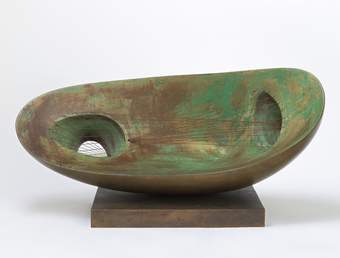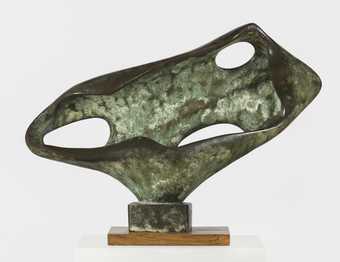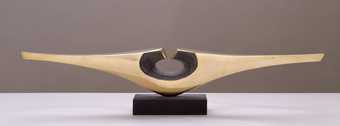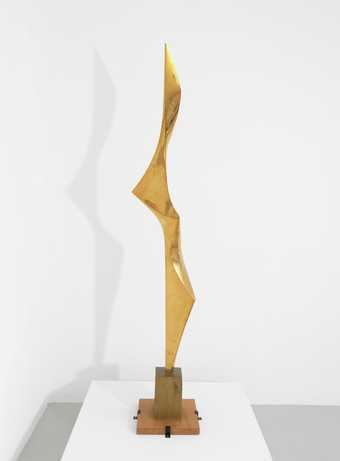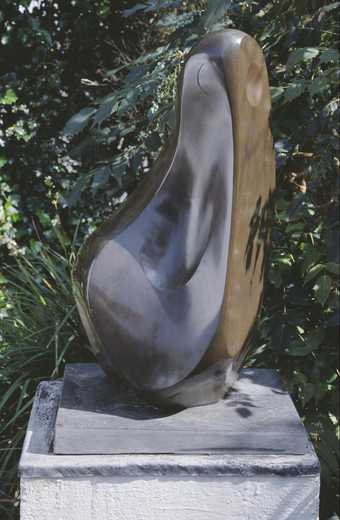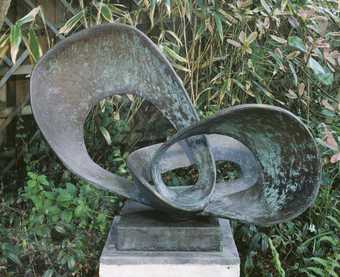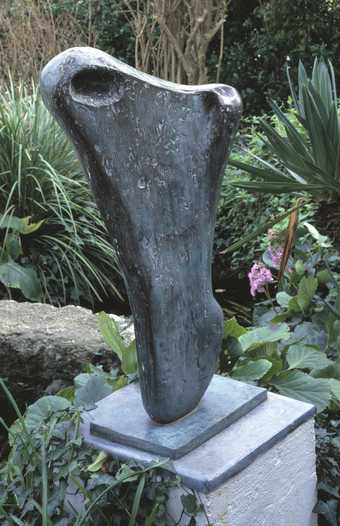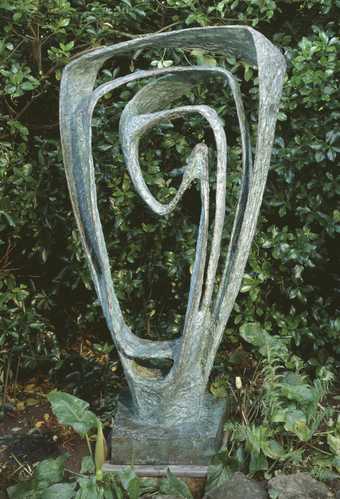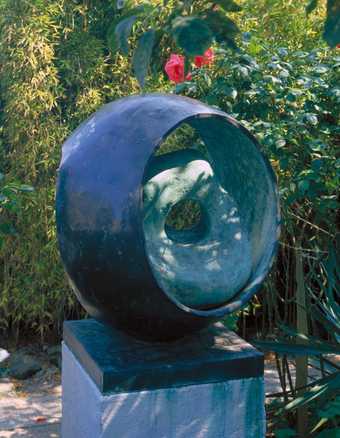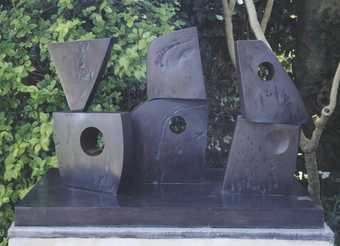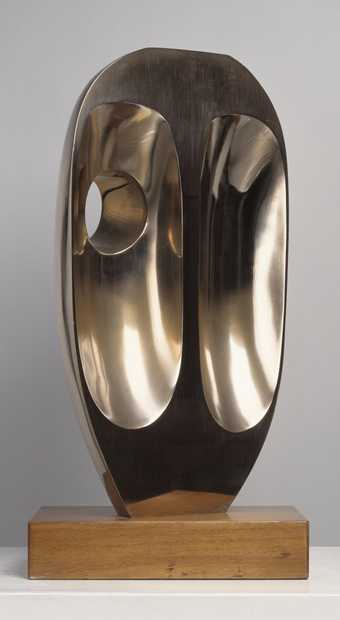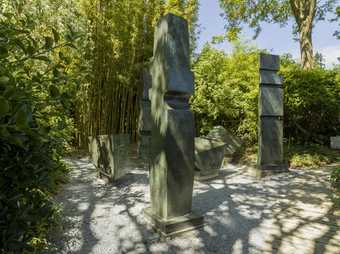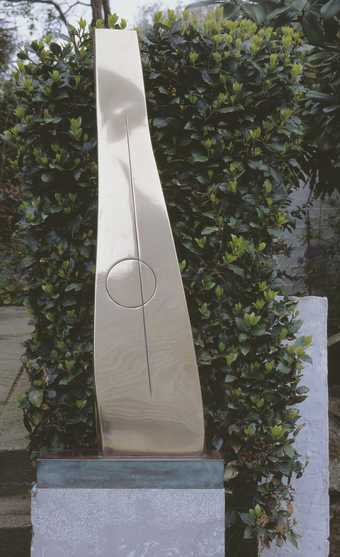
In Tate St Ives
- Artist
- Denis Mitchell 1912–1993
- Medium
- Bronze
- Dimensions
- Object: 1918 × 279 × 286 mm
- Collection
- Tate
- Acquisition
- Presented by T.L. Johnson 1966
- Reference
- T00890
Display caption
Denis Mitchell moved to Cornwall in 1930. He played an important role in the artistic development of St Ives following the Second World War. He was a founder member of the Penwith Society and was an assistant to Barbara Hepworth from 1949-59, working on many of her sculptures. In 1959 he began to make abstract sculptures in bronze using a local sand-casting foundry. Simple shapes can be cast by this method and the casts were initially rough, enabling him to use his manual skills to perfect and purify the surfaces. 'Praze' is a fine example of his streamlined single sculptural forms. It is a variation on a theme that he had begun to develop some years earlier. The title, 'Praze' is a Cornish place name.
Gallery label, August 2004
Does this text contain inaccurate information or language that you feel we should improve or change? We would like to hear from you.
Catalogue entry
Denis Mitchell 1912-1993
T00890 Praze 1964
Not inscribed.
Polished bronze, 75½ x 11 x 11 ¼ (191.7 x 28 x 28.5).
Presented by Mr. J. L. Johnson 1966.
The artist wrote (23 September 1966) that he had worked for three months on this, the second cast in the edition (Cast No. 1, in aluminium, is in the collection of the Leicestershire Education Authority; Cast No. 3 is in bronze). He added (letter of 20th February 1967) that ‘Praze’ is ‘a variation of a theme that I have been working on since 1959, and is... a very important sculpture in my development as it has in my opinion almost succeeded in completely expressing my preconceived idea, which is very rare... my sculpture is cast rough in solid metal by the simple commercial sand casting technique and then I work on them, first with grinding wheels, then files and finally to get the exact form I need I rub by hand with abrasive papers, and then polish them; this is the reason I work in solid metal so that I can carve the shape out of it and so make it as near perfect a form as possible... all my sculptures in an edition are slightly different.’
Published in The Tate Gallery Report 1966–1967, London 1967.
Explore
- abstraction(8,615)
-
- non-representational(6,161)
-
- irregular forms(2,007)
- UK cities, towns and villages(12,725)
-
- Praze(1)
- Cornwall(1,034)
- England(19,202)
- England, South West(3,507)
- England, Southern(8,982)
You might like
-
Dame Barbara Hepworth Curved Form (Trevalgan)
1956 -
Dame Barbara Hepworth Landscape Sculpture
1944, cast 1961 -
Dame Barbara Hepworth Sea Form (Porthmeor)
1958 -
Denis Mitchell Cauca
1971 -
Denis Mitchell Turning Form
1959 -
Dame Barbara Hepworth Coré
1955–6, cast 1960 -
Dame Barbara Hepworth Forms in Movement (Pavan)
1956–9, cast 1967 -
Dame Barbara Hepworth Torso II (Torcello)
1958 -
Dame Barbara Hepworth Garden Sculpture (Model for Meridian)
1958 -
Dame Barbara Hepworth Sphere with Inner Form
1963 -
Dame Barbara Hepworth Six Forms (2 x 3)
1968 -
Dame Barbara Hepworth Hollow Form with Inner Form
1968 -
Dame Barbara Hepworth Vertical Form (St Ives)
1968, cast 1969 -
Dame Barbara Hepworth Conversation with Magic Stones
1973 -
Dame Barbara Hepworth Shaft and Circle
1973


